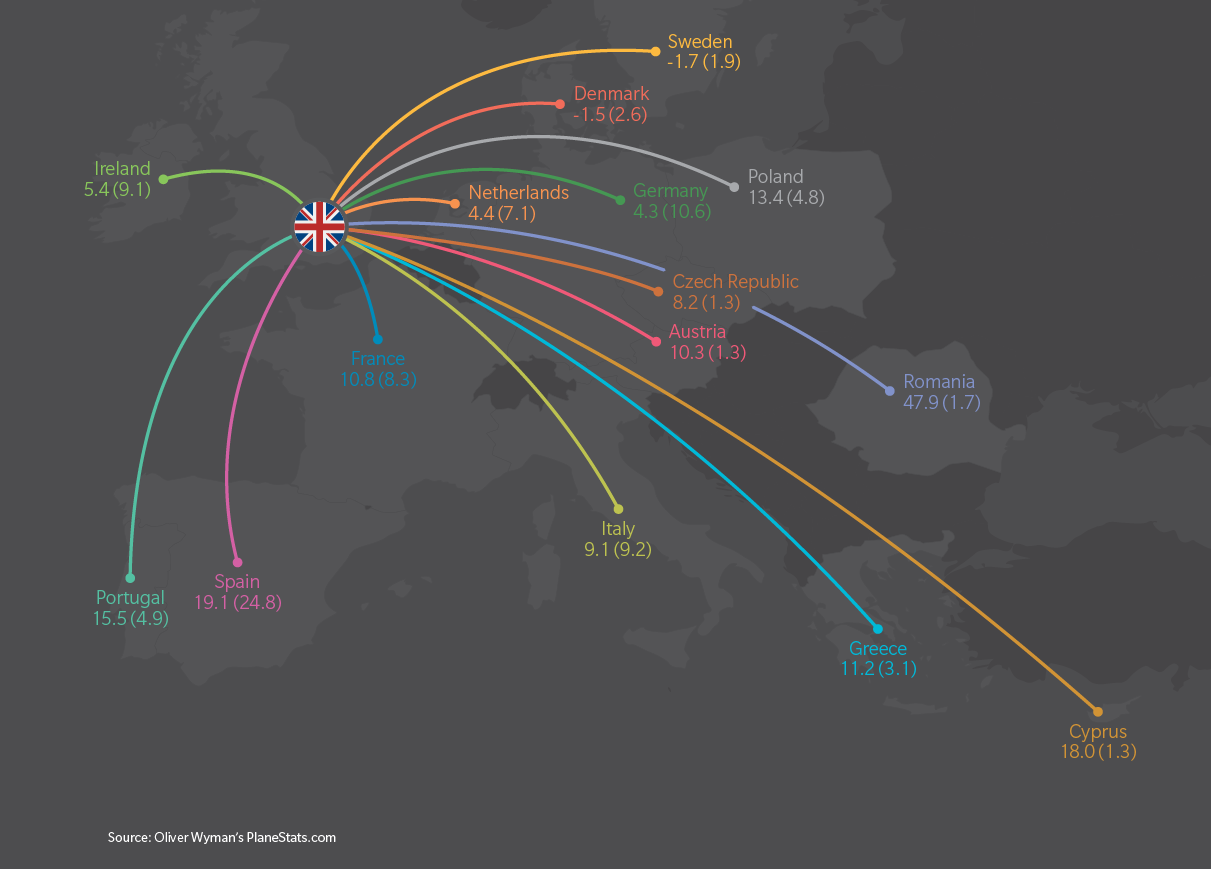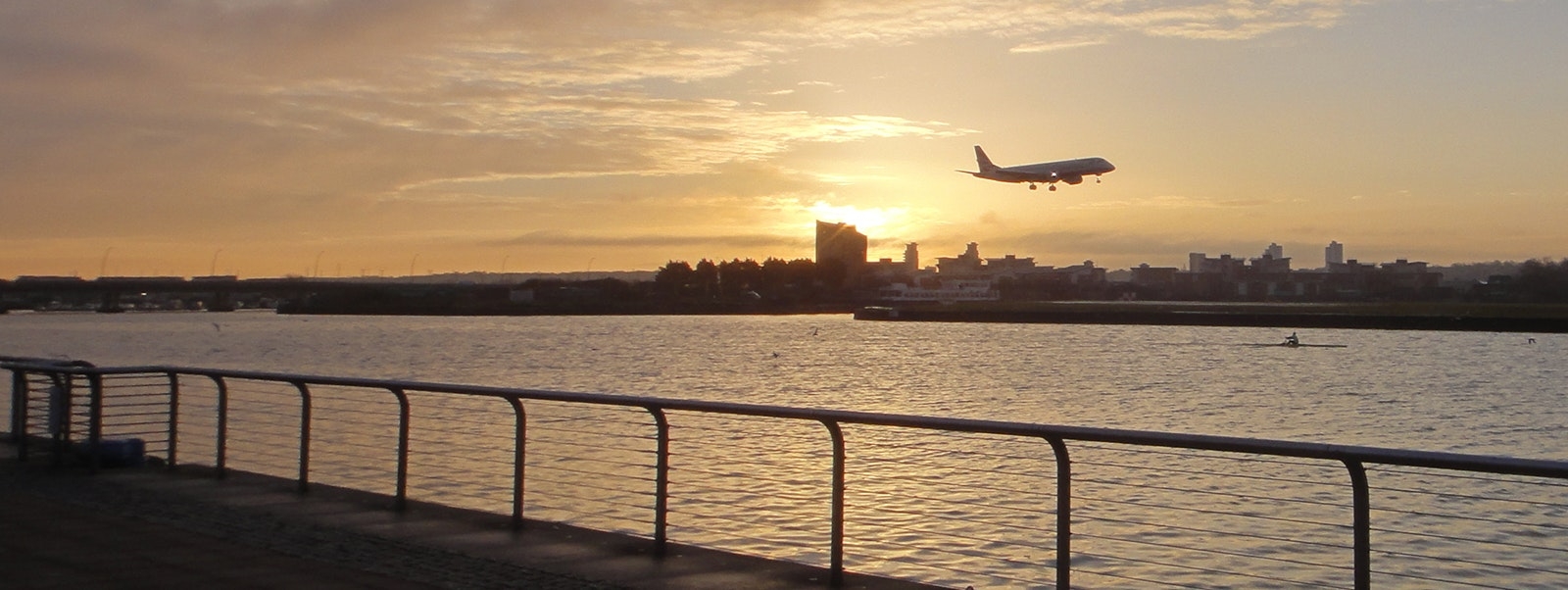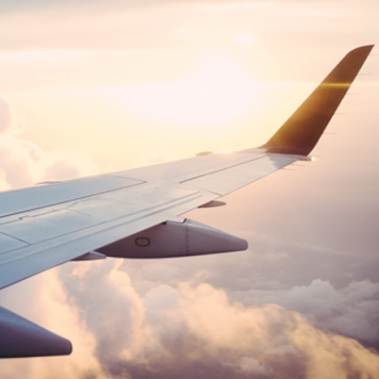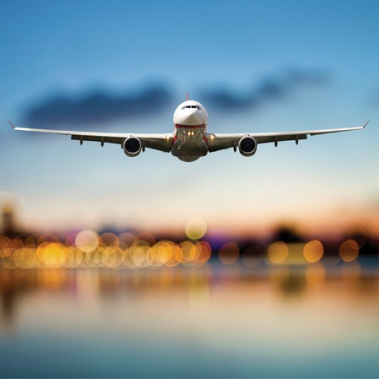In the months leading up to the Brexit referendum in June 2016, UK to EU capacity already had been increasing faster than for UK to non-EU markets. And UK to EU seats have increased by an additional 10.4 percent since the referendum (year-end June 2017 versus year-end June 2016). Delivery of new aircraft (ordered pre-vote) is providing the means for increasing capacity, which is occurring largely on the region’s low-cost carriers (Ryanair and Easyjet), although even British Airways ramped up capacity by 10 percent this past year.
UK airlines also have seen a boost in passenger numbers on these routes. According to the UK’s Civil Aviation Authority, UK to EU passenger volumes have increased by 8.7 percent since the referendum, compared to a 6.8 percent rise in UK to non-EU destinations, possibly due in part to a decline in the pound after the referendum.
What comes next for UK-EU air travel, as Brexit proceeds, largely depends on what happens to existing EU-wide agreements – which airlines are keen to renegotiate as soon as possible. Favorable terms would mean business as usual, while limits on access or added regulation could quickly cut into airlines’ bottom lines. While Brexit is not likely to cause a slump in UK travel demand, some changes may be required to address regulatory implications.
Brexit – the departure of the United Kingdom from the European Union – is expected to impact many aspects of trade and travel. Oliver Wyman’s Planestats.com has been tracking data on capacity and passengers to see what has been happening to airline travel from the UK to the EU since the marriage-ending vote. Data for the first year post-referendum shows an uptick in both UK to EU capacity and passengers – and these figures have risen faster than for UK to non-EU destinations.
What comes next for UK-EU air travel, as Brexit proceeds, largely depends on what happens to existing EU-wide agreements. While Brexit is not likely to cause a slump in UK travel demand, some changes may be required to address regulatory implications.
TOTAL PASSENGERS FROM THE UNITED KINGDOM TO THE EUROPEAN UNION
ROLLING 12 MONTHS, INDEX = JANUARY 2014
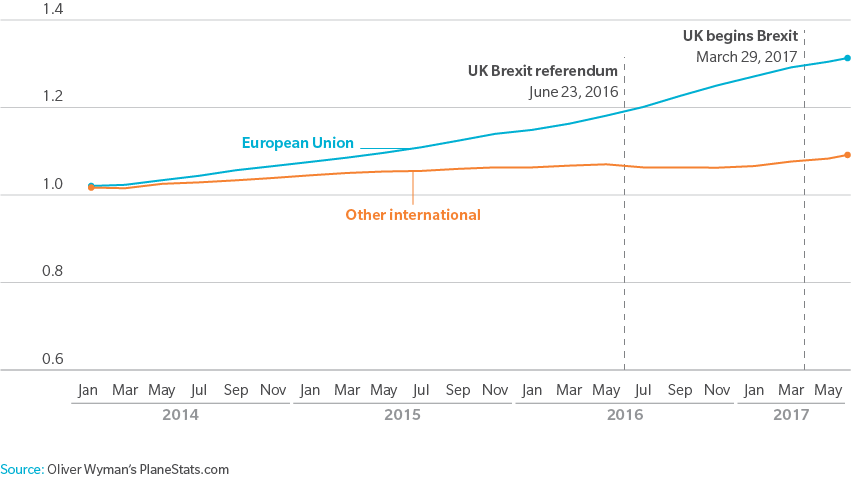
SCHEDULED SEATS (CAPACITY) FROM THE UNITED KINGDOM TO THE EUROPEAN UNIONPERCENT CHANGE FOR YEAR-END JUNE 2016 TO YEAR-END JULY 2017;
TOP 15 MARKETS, PERCENT SHARE OF TOTAL MARKET IN PARENTHESES
